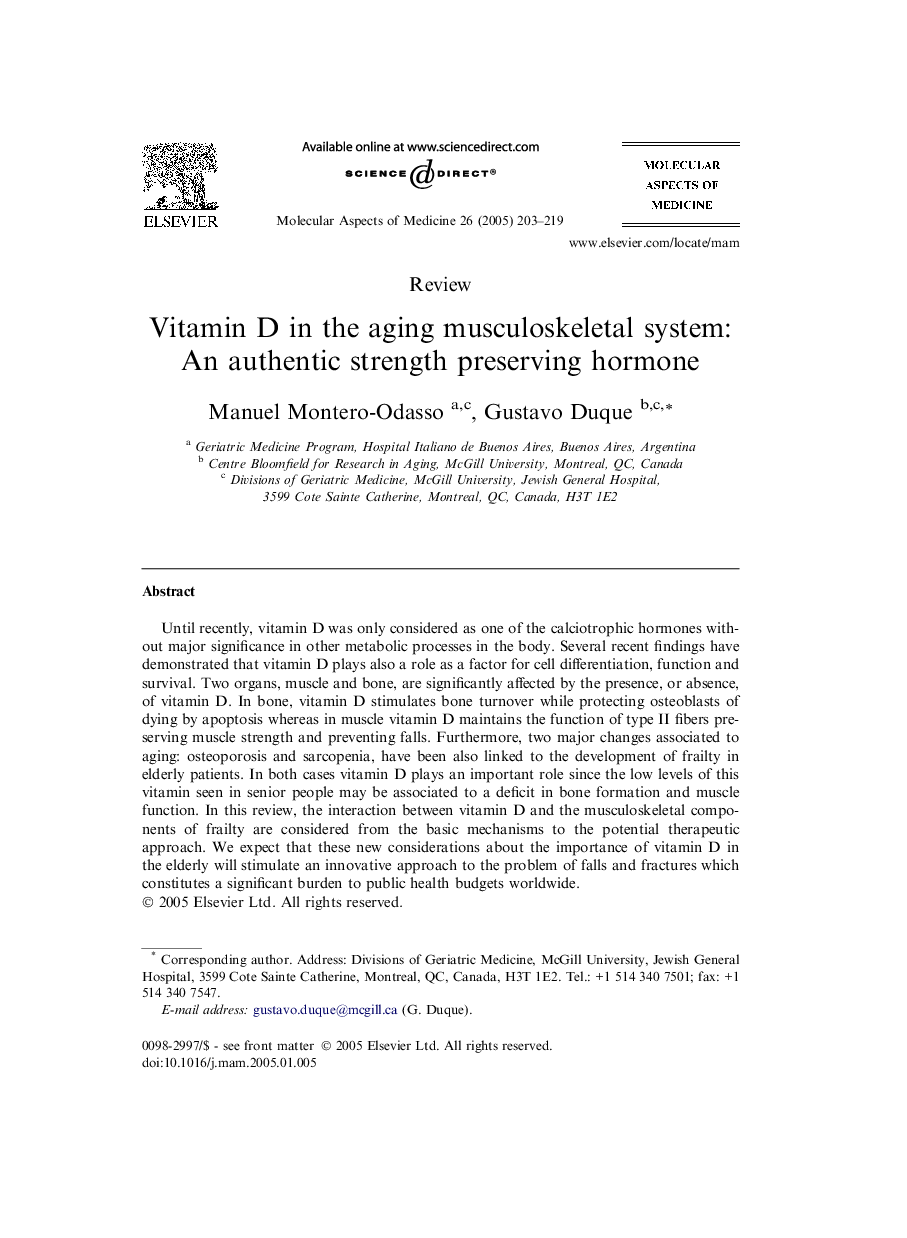| Article ID | Journal | Published Year | Pages | File Type |
|---|---|---|---|---|
| 9893164 | Molecular Aspects of Medicine | 2005 | 17 Pages |
Abstract
Until recently, vitamin D was only considered as one of the calciotrophic hormones without major significance in other metabolic processes in the body. Several recent findings have demonstrated that vitamin D plays also a role as a factor for cell differentiation, function and survival. Two organs, muscle and bone, are significantly affected by the presence, or absence, of vitamin D. In bone, vitamin D stimulates bone turnover while protecting osteoblasts of dying by apoptosis whereas in muscle vitamin D maintains the function of type II fibers preserving muscle strength and preventing falls. Furthermore, two major changes associated to aging: osteoporosis and sarcopenia, have been also linked to the development of frailty in elderly patients. In both cases vitamin D plays an important role since the low levels of this vitamin seen in senior people may be associated to a deficit in bone formation and muscle function. In this review, the interaction between vitamin D and the musculoskeletal components of frailty are considered from the basic mechanisms to the potential therapeutic approach. We expect that these new considerations about the importance of vitamin D in the elderly will stimulate an innovative approach to the problem of falls and fractures which constitutes a significant burden to public health budgets worldwide.
Related Topics
Life Sciences
Biochemistry, Genetics and Molecular Biology
Biochemistry
Authors
Manuel Montero-Odasso, Gustavo Duque,
